
Redditors Learn About Shoebill, A Bird That Stalk Their Prey Patiently While Striding Very Slowly And Is Frequently Motionless
Shoebill are also known to prey on baby crocodiles, amongst other species

A very large wading bird with long legs, the shoebill (Balaeniceps rex) is also known as the whalebill, whale-headed stork, or shoe-billed stork. Its large shoe-shaped bill is where its name comes from.
Its general shape is fairly stork-like, and because of this, it was originally included with storks in the order Ciconiiformes. However, genetic data placed it in the Pelecaniformes order, alongside herons and pelicans.
Although it's possible that the shoebill was known to the Ancient Egyptians, classification didn't occur until the 19th century, when skins and subsequently live specimens were introduced to Europe. The shoebill has been referred to as "statue-like" due to its sluggish movements and propensity to remain stationary for extended periods of time.
Because they are so sensitive to human disturbance, they may leave their nests if people disturb them. However, when foraging, this wader can be relatively docile, provided there is thick foliage between it and people.
The shoebill prefers low-oxygen environments like swamps, marshes, and bogs where fish frequently come to the surface to breathe. The shoebill frequently stands and perches on floating vegetation, which is unusual for a bird this size and gives them the appearance of a giant jacana, though the similarly sized and occasionally sympatric Goliath heron (Ardea goliath) is also known to do so.
Meet u/My_Bird_Buddy, a Redditor who has shared an interesting piece of information with the TodayILearned subreddit community
 u/My_Bird_Buddy
u/My_Bird_BuddyThis is a Shoebill and they are known to prey on baby crocodiles, amongst other species
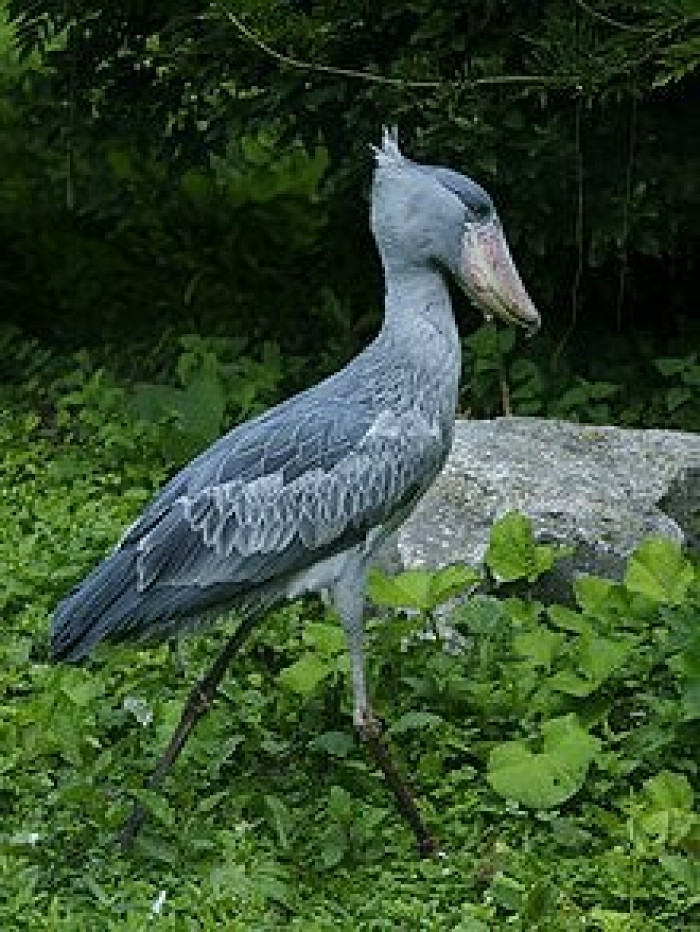 Wikipedia
Wikipedia
The juveniles are browner than the adults, which are mostly gray. It inhabits expansive marshes in tropical East Africa, from South Sudan to Zambia.
Due to their solitary nature, shoebills forage at least 20 meters (66 feet) apart, even in areas that are rather densely populated. Keep scrolling to see what Redditors had to chirp into this discovery.
Hitting their prey with the machine gun
 Reddit
Reddit
This Redditor believes shoebills are so cool
 Reddit
RedditShoebills actually sound like machine guns
 Reddit
Reddit
According to this Redditor, they are consummate hunters
 Reddit
RedditThat looks like a person in a bird costume
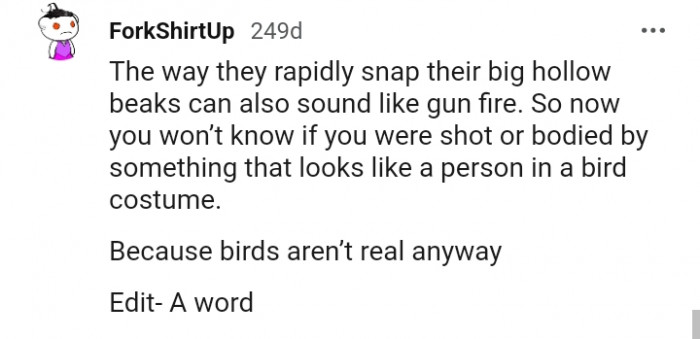 Reddit
Reddit
This species patiently and slowly hunts its prey while hiding. The shoebill moves very slowly and is frequently immobile when hunting.
This species does not have a reputation for using tactile hunting techniques, unlike some other large waders. Instead, it hunts entirely by vision.
When prey is spotted, it strikes quickly and violently. However, handling time after the strike can last longer than 10 minutes, depending on the size of the prey.
About 60% of strikes result in a kill. During the strike, water and vegetation are frequently snatched up and spilled out from the edges of the mandibles.
They can approach pretty close to the nest
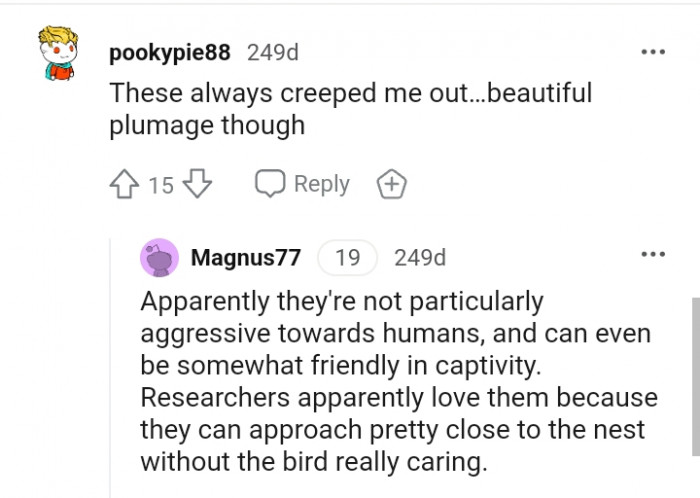 Reddit
Reddit
According to this Redditor, it looked so unrealistic
 Reddit
RedditI have mastered the art of moving so incredibly well
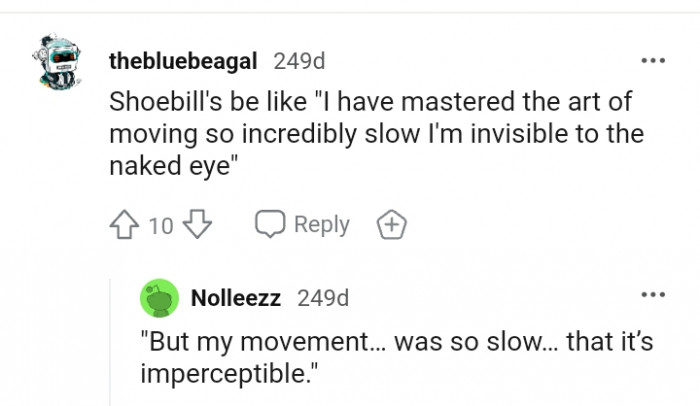 Reddit
Reddit
They look like real life muppets
 Reddit
RedditIt is pretty cool to watch
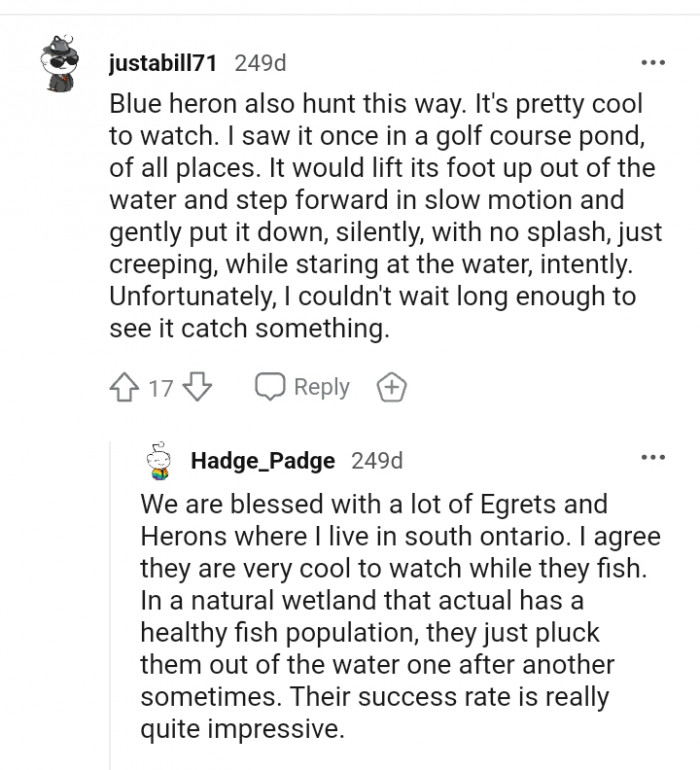 Reddit
Reddit
She's a clever girl
 Reddit
RedditFor this Redditor, shoebill are creepy looking
 Reddit
RedditWhy do these exist and they are dinosaurs, no?
 Reddit
RedditThis Redditor is asking their own greetings
 Reddit
Reddit
Hippopotamus activity may unintentionally help the shoebill because periodically, submerged hippos force fish to the surface. The shoebill can hunt large prey thanks to its razor-edged beak, enormous bill, and broad gape, frequently going after prey that is larger than what other large wading birds can capture.
Leave your thoughts about this bird in the comments below.






